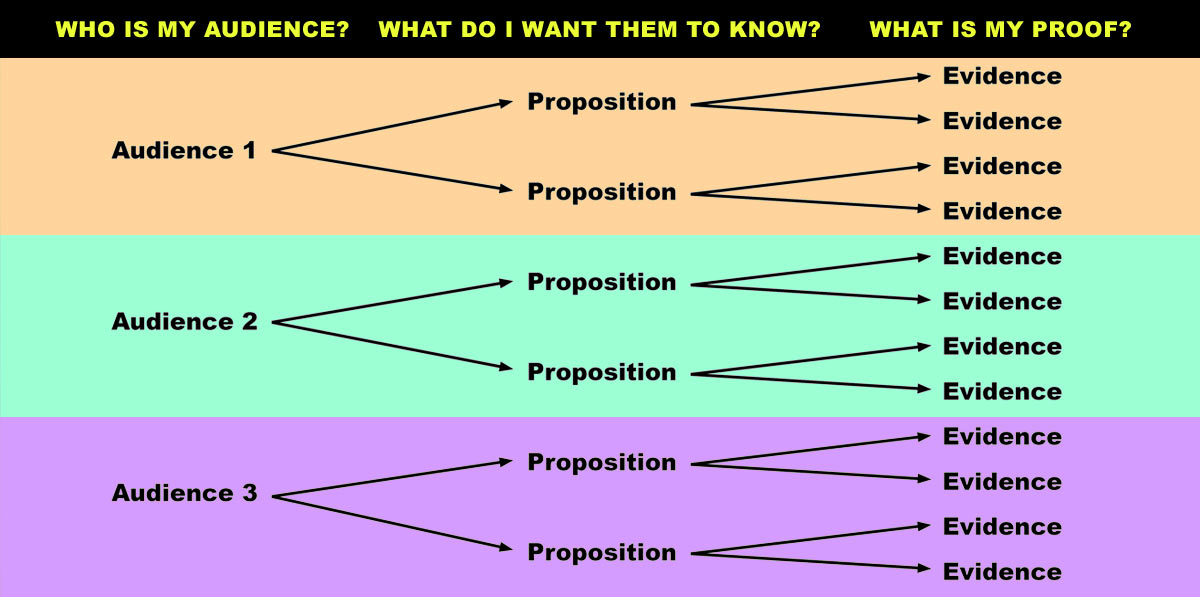This is the second in a series of posts that I’m writing about supporting a brand with social media. In the first post, I suggested that website owners should feed their own websites first, and then share from their websites to social media.
Now, let’s step back and talk about the content of those posts and social shares….
The Problem: No Planning Results in Mind-Numbing Repetition
Since many of my friends and contacts share my religious orientation, I have seen thousands of variants on the cliche’d social share — a pretty picture with a verse. There must be some mill somewhere churning them out. They look something like this:

Don’t get me wrong…. I love pretty pictures, and I love the power of Scripture. But when a religious organization trots out one pretty picture with a verse after another as its social shares, and when those pretty pictures and verses could have been shared by any other religious organization, I have to ask “Do they really understand their particular mission, and their particular audience?” As far as I’m concerned, such mindless social shares do more to damage their reputation than to support it.
Secular organizations, perhaps because their imagination is stirred by the profit motive, tend to do better. But even they fall into ruts.
Why Do Organizations Do This To Themselves?
I asked one of the smartest entrepreneurs that I know. His insightful answer: “Because it’s easy.” Here’s an illustration of the lazy thinking:

The Solution: A More Productive Line of Thought
By analyzing your various audiences and what they need to hear from you, you’re likely to think of many ways to demonstrate the good “fit” between their needs and what you supply. In other words, you’ll think of many subjects for your blog posts and social shares. Your evidence will be varied, and stands a good chance of engaging your audiences.

Start By Defining Your Target Audiences
 One of my excellent clients is Ron Speed Jr.’s Adventures. My work with them goes back to the mid-1990’s when Ron Speed Sr. ran the business. Even back then, they knew that I don’t know squat about fishing. But that’s alright, because RSJA clients come from many walks of life, and knowing the different kinds of lures or fish isn’t what they need from me. You see, Ron Speed Sr. and Ron Speed Jr. know their clients. Whether or not they have ever explicitly done so, they can define their audiences. Some of their clients/audiences are 1) seasoned tournament anglers; some are 2) serious amateurs; some are just 3) casual fishermen. And each of these groups has certain characteristics. Ron and his staff know what drives them, what they worry about, what their wives (or husbands) worry about, what they like to eat, and how they like to relax after a day of catching fish (as redundant as that may sound to unsuccessful fishermen like myself). If you look at Ron’s newsletters over the years, you’ll see all kinds of evidence supporting the claims and reassurances that these various audiences need to hear. It isn’t just pictures of big fish, although there are plenty of those!
One of my excellent clients is Ron Speed Jr.’s Adventures. My work with them goes back to the mid-1990’s when Ron Speed Sr. ran the business. Even back then, they knew that I don’t know squat about fishing. But that’s alright, because RSJA clients come from many walks of life, and knowing the different kinds of lures or fish isn’t what they need from me. You see, Ron Speed Sr. and Ron Speed Jr. know their clients. Whether or not they have ever explicitly done so, they can define their audiences. Some of their clients/audiences are 1) seasoned tournament anglers; some are 2) serious amateurs; some are just 3) casual fishermen. And each of these groups has certain characteristics. Ron and his staff know what drives them, what they worry about, what their wives (or husbands) worry about, what they like to eat, and how they like to relax after a day of catching fish (as redundant as that may sound to unsuccessful fishermen like myself). If you look at Ron’s newsletters over the years, you’ll see all kinds of evidence supporting the claims and reassurances that these various audiences need to hear. It isn’t just pictures of big fish, although there are plenty of those!
What are your audiences? If you think they’re all one kind of person, think again. Consider this starter list:
- Decision makers
- People who have to justify their actions to decision makers
- People who buy from you
- People who can persuade someone else to buy from you
- People who buy for themselves
- People who buy for others
- First-time customers
- Repeat customers
- People who need to save money
- People who need to save time
If you need help defining your audiences, give me a call. I’d love to sit down with you and brainstorm about this!
